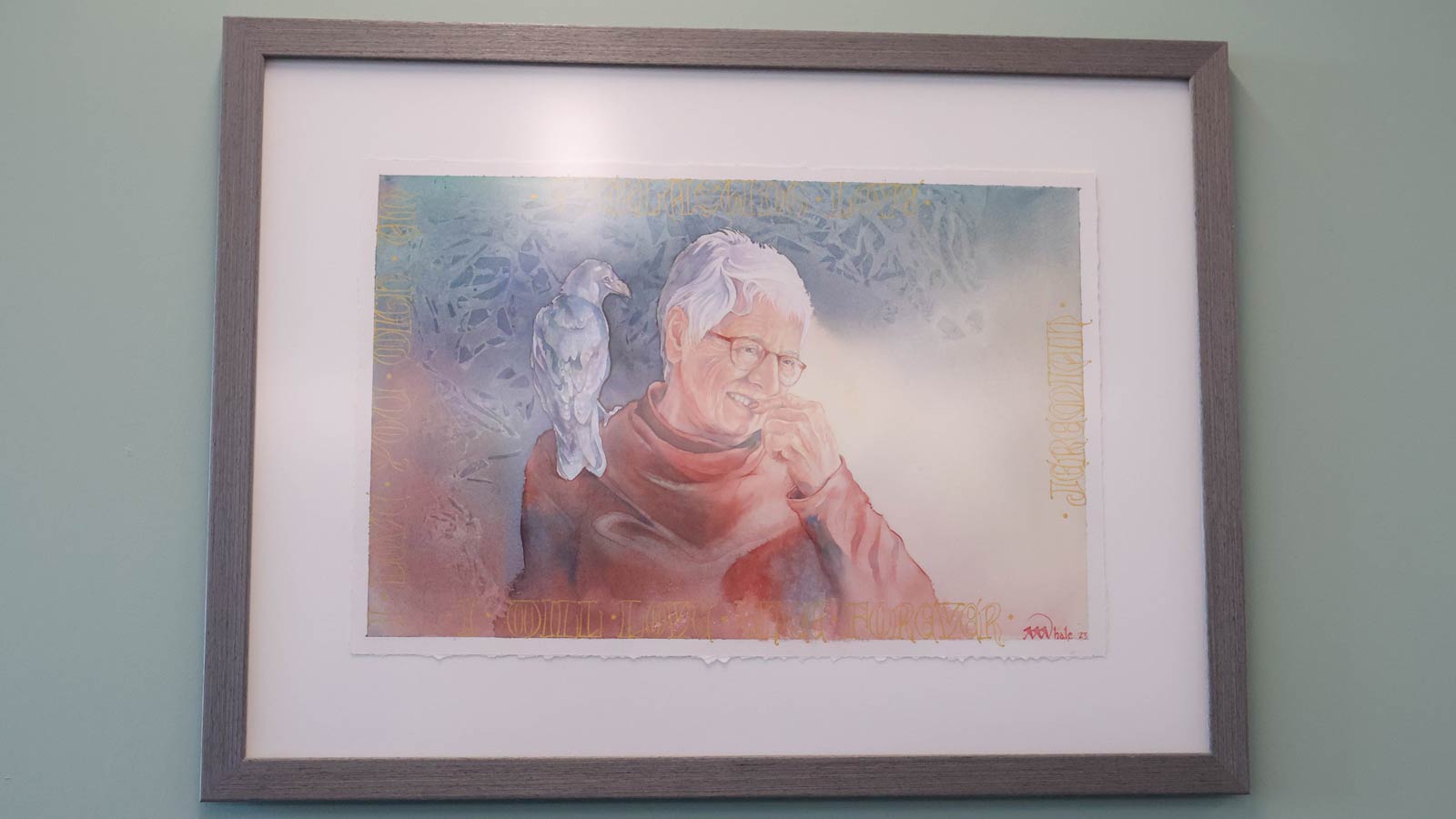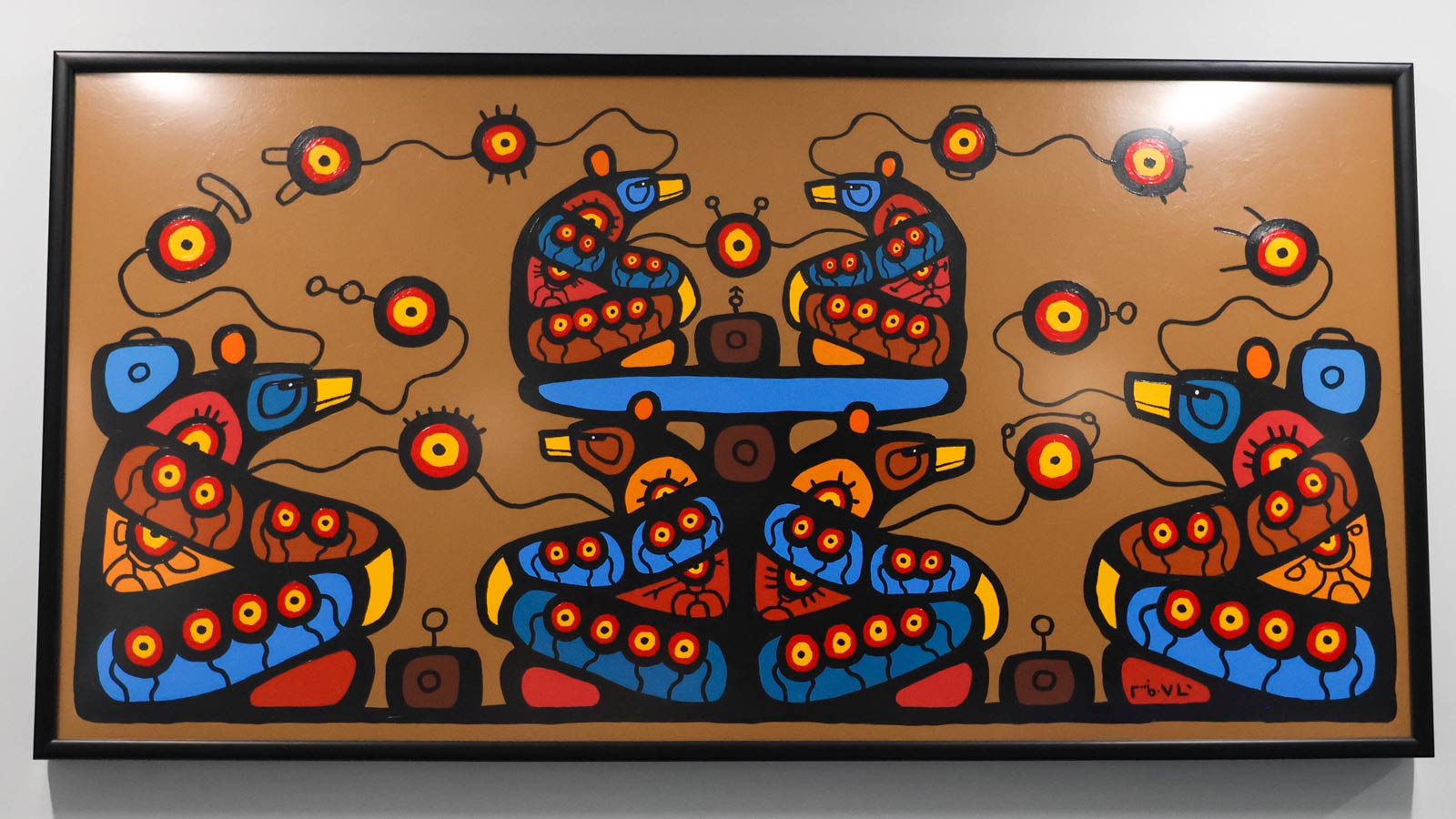AJA Louden, an artist based in amiskwaciwâskahikan (Treaty 6, Edmonton), stands by the healing power of art in high-stress environments such as hospital settings.
“Art gives us the chance to be transported, and that element of escapism can be valuable because health care can be really intense,” he says. “It offers a sense of connection, healing and empowerment and creates a platform to share the human experience.”
AJA is one of 13 artists whose work is featured in an art installation in the new emergency department at Covenant Health’s Misericordia Community Hospital. The hospital created the installation to foster a positive patient experience and help visitors relax in an environment that can often feel scary and intimidating.
Studies have shown that incorporating art into health care can lead to better patient outcomes and gives people an opportunity to engage with the surrounding community. Scenes like landscapes and nature help to create a calming environment, while more abstract pieces aim to balance curiosity and relaxation.
AJA’s goal for his piece was to bring the outdoors indoors for patients and visitors. It includes stargazer lilies and asters created out of yarn from two of the oldest woolen mills in Canada.
“It’s a colourful representation and mental connection to the natural world; I want people’s imaginations to wander, to look at the stars and think about hope and what is yet to happen.”
Through the generosity of donors, Covenant Foundation supported the new Misericordia emergency department with $2.3 million for specialized equipment and training, family-centred care and comforting environments, including $53,900 in artwork.
Rosemary Malowany, portfolio operations manager at the Misericordia and co-lead of the installation project, says the art for the new emergency department was sourced through a combination of requests for proposals from Alberta artists, the Misericordia’s pre-existing collection, new purchases and donations facilitated through Covenant Foundation and a partnership with the Friends of University Hospitals. Although the art had to be two-dimensional to conform to infection prevention and control standards, variety was key when choosing what to feature. Rosemary wanted to ensure a wide representation of different artist groups, media and subject matters so patients and families could feel reflected by some of the creations.
“We serve a diverse patient population, and any opportunity we have to incorporate art and culture into the care experience is valuable. Creating that sense of connection, whether with the person taking care of them or by seeing their own culture in the art on the walls, makes people feel included, and we need to make sure people are part of their own care journey.”
 |
Mary Whale’s seniors’ collection is featured in the general treatment area of the emergency department.

Kevin Cardinal’s work is displayed in the intake and assessment area.
Along with representation, factors such as viewer experience were also considered in the selection process, says Rosemary. For example, pieces with a deliberately blurred effect were not chosen because they could negatively impact someone experiencing visual impairment or vertigo. Instead, the selection committee tried to choose pieces that were detailed and interesting enough, without being too busy, that a viewer could look at them for an extended period.
The placement of pieces was also deliberate, Rosemary says. "We were thoughtful about where we put the various artworks, looking at their size, subject matter and colour palettes but also thinking about which patients are often seen in an emergency department area.”
For instance, many patients in the general treatment area are older, so Mary Whale’s seniors’ collection is placed there. The intake and assessment area where most patients come through features works by Indigenous artists Kevin Cardinal and Sharifa Marsden because the Misericordia hospital sees a larger number of Indigenous patients compared to other hospitals, given its proximity to various First Nations west and northwest of Edmonton. And AJA’s piece is displayed near the mental health unit.
“When you see art as a tool, you see humanity — whether your own or others — and it opens up a bridge between different groups of humans who may not have the opportunity to connect otherwise,” says AJA. “We all experience art as individuals but yet can see beauty in the same way, and that shared feeling can help break down prejudices and preconceived notions about art and life.”
Written by: Gwen Hunka, communication advisor, Covenant Health, as originally published on the Covenant Health website
Your generosity makes a tremendous difference. To support comforting enhancements like these please visit our donation page.


